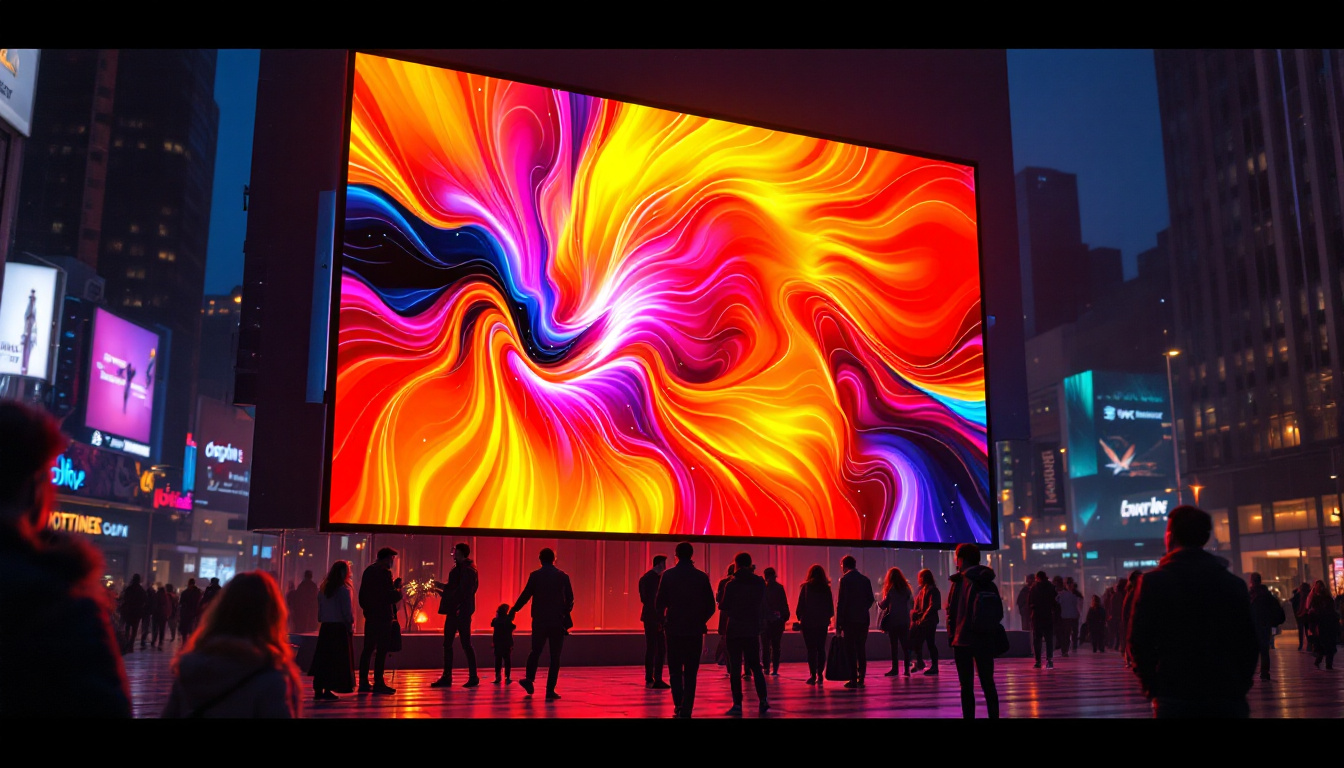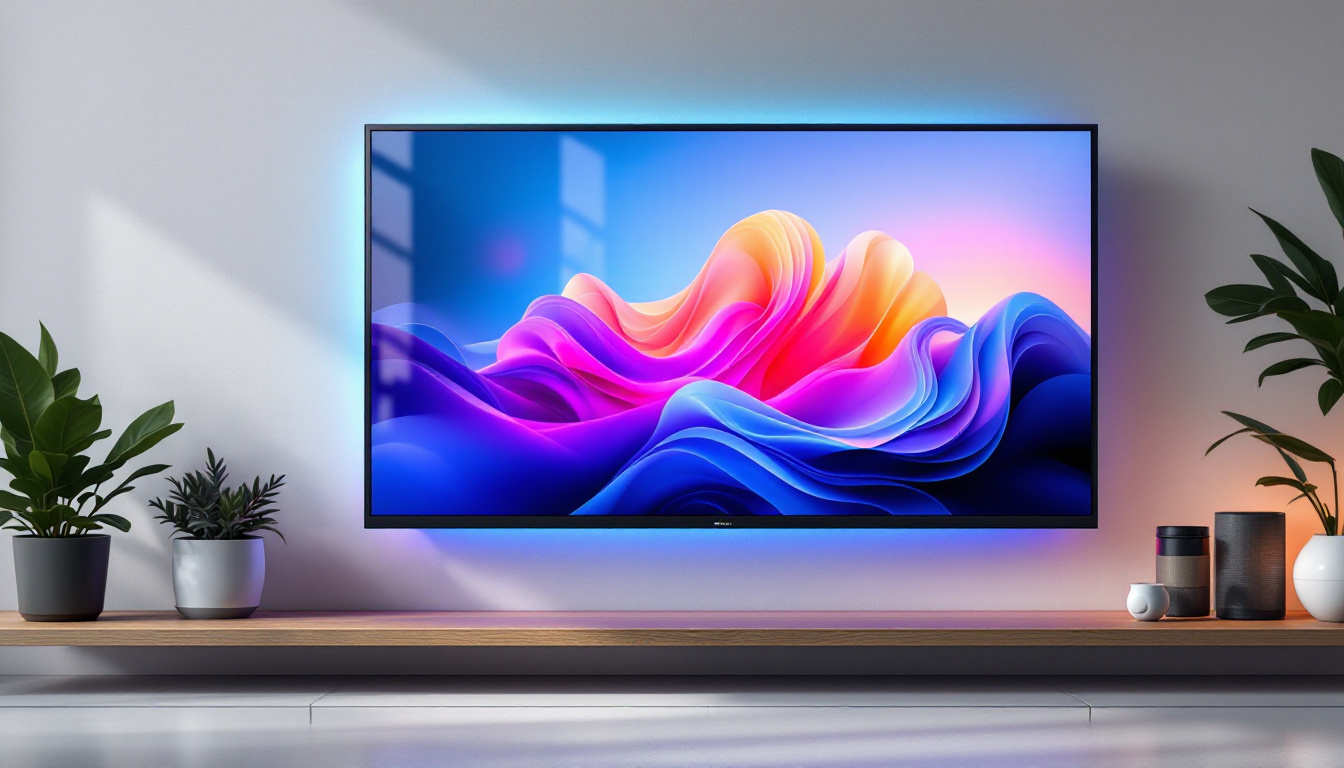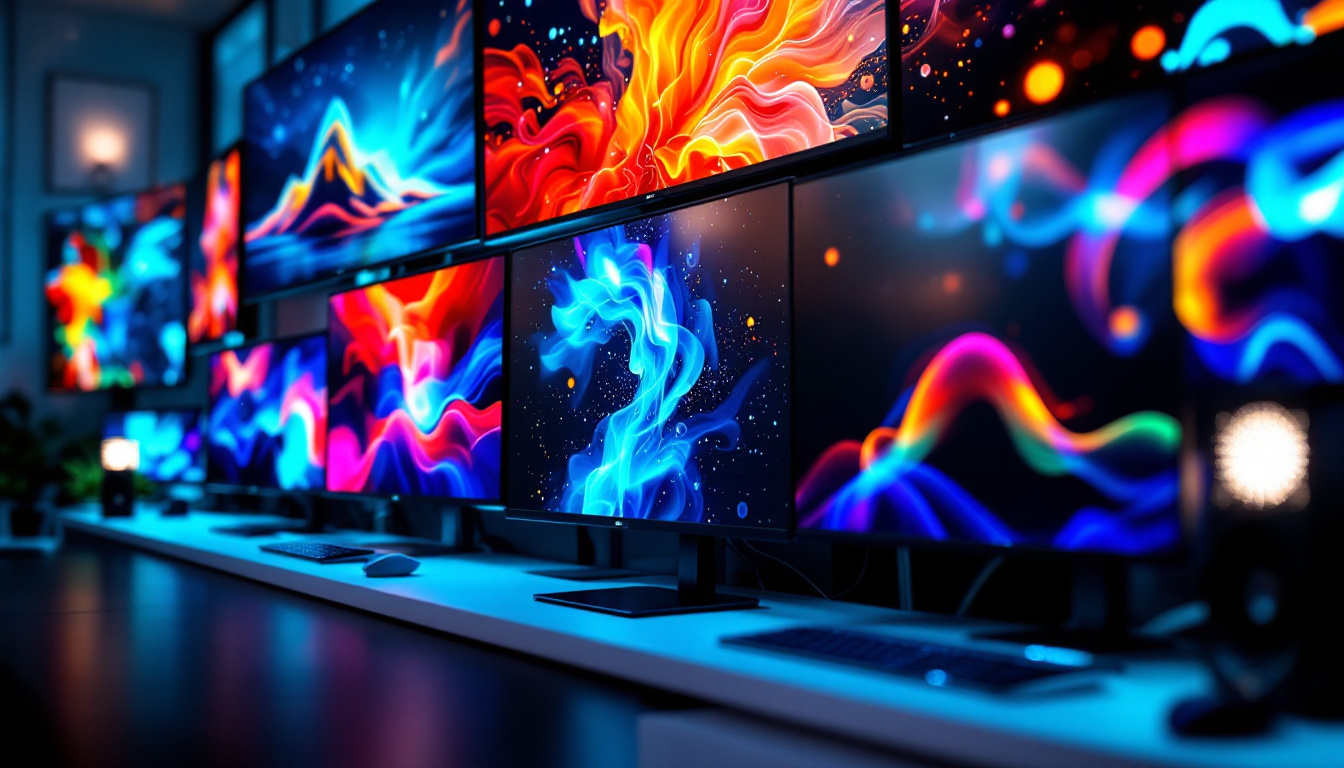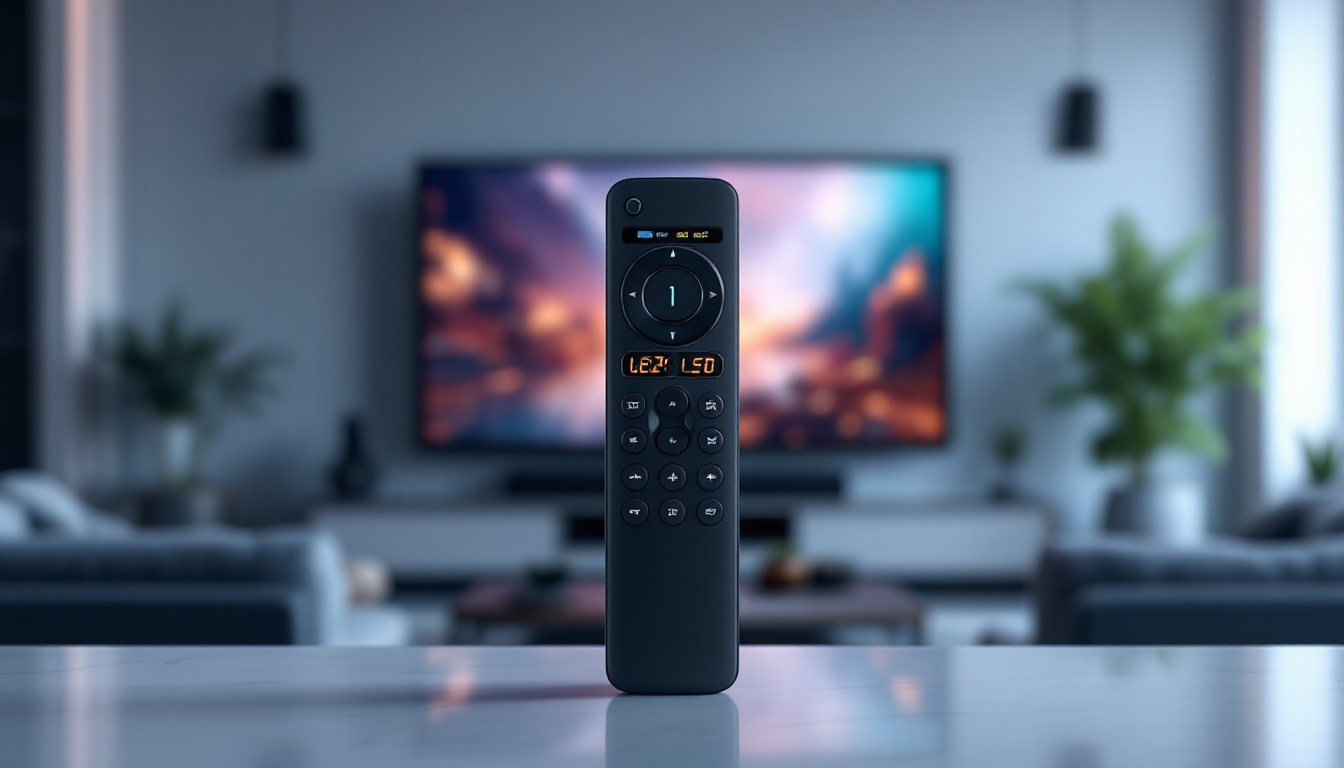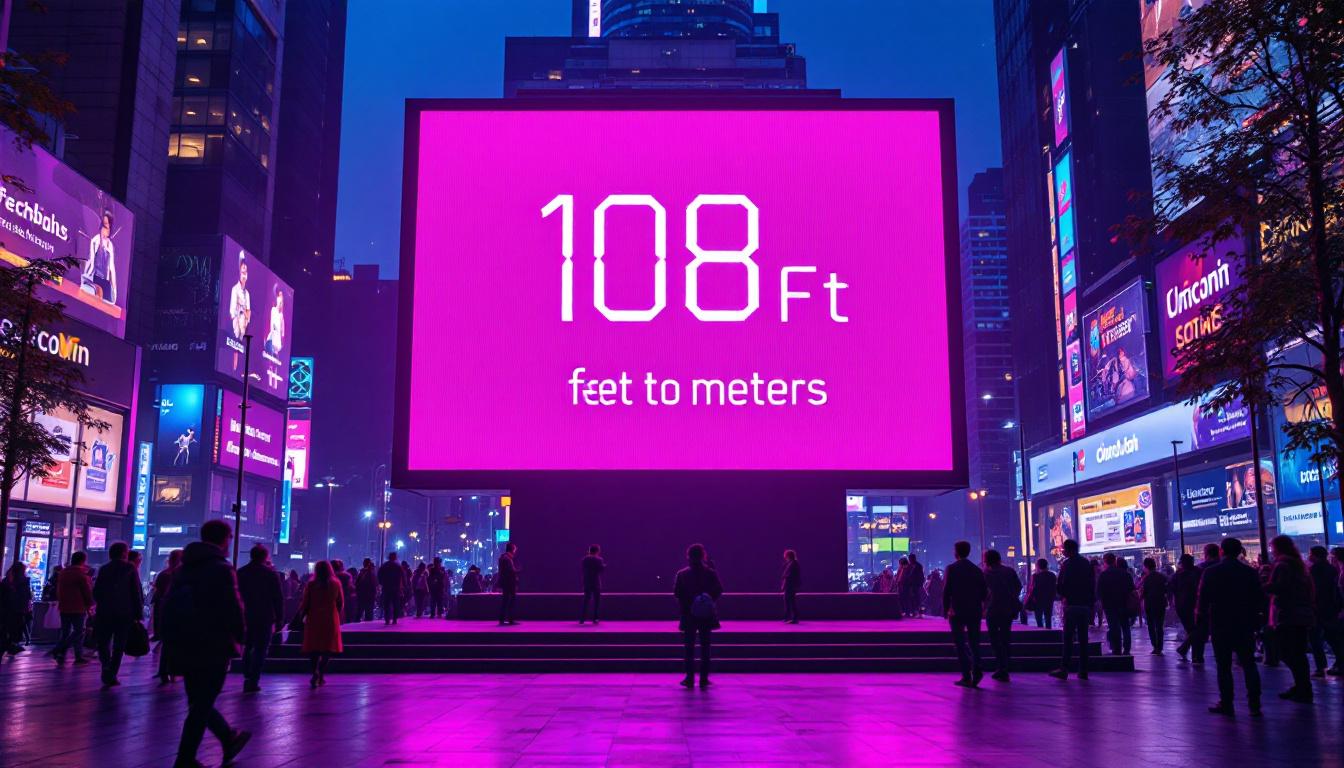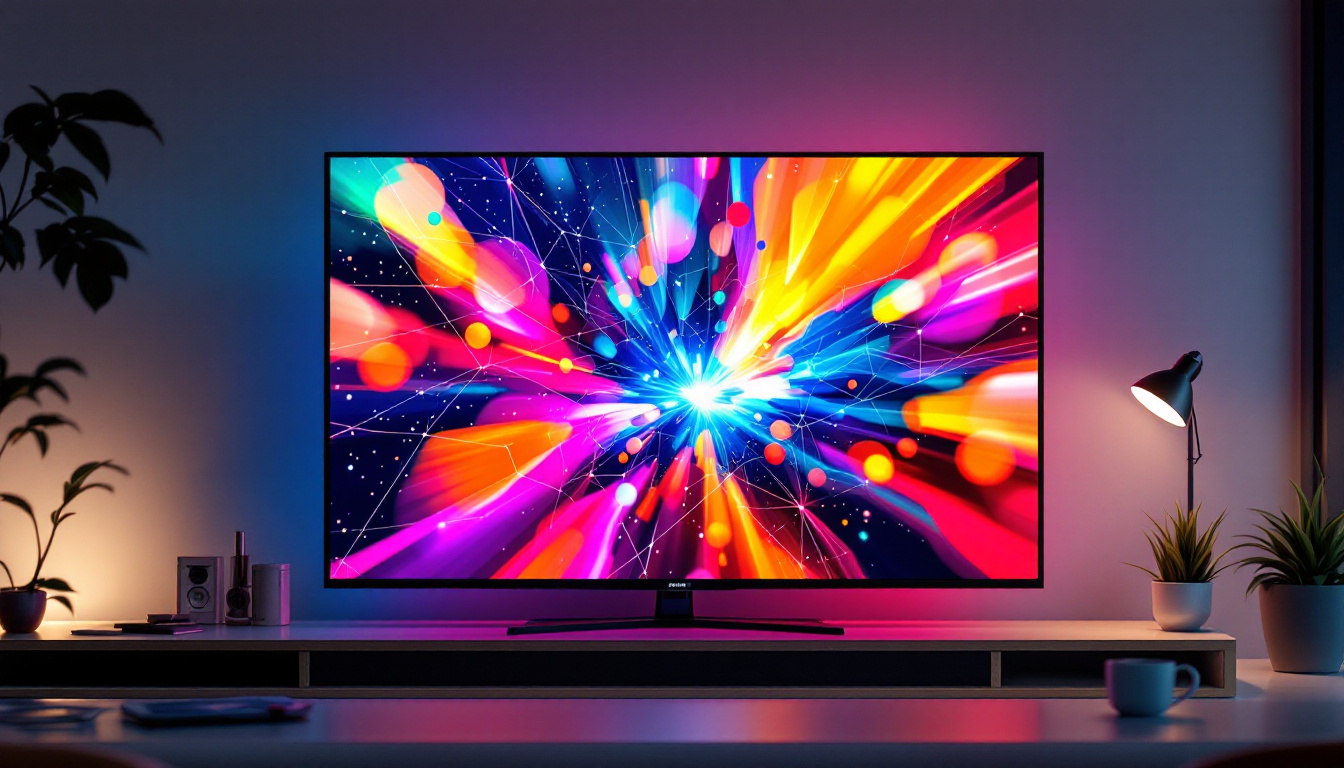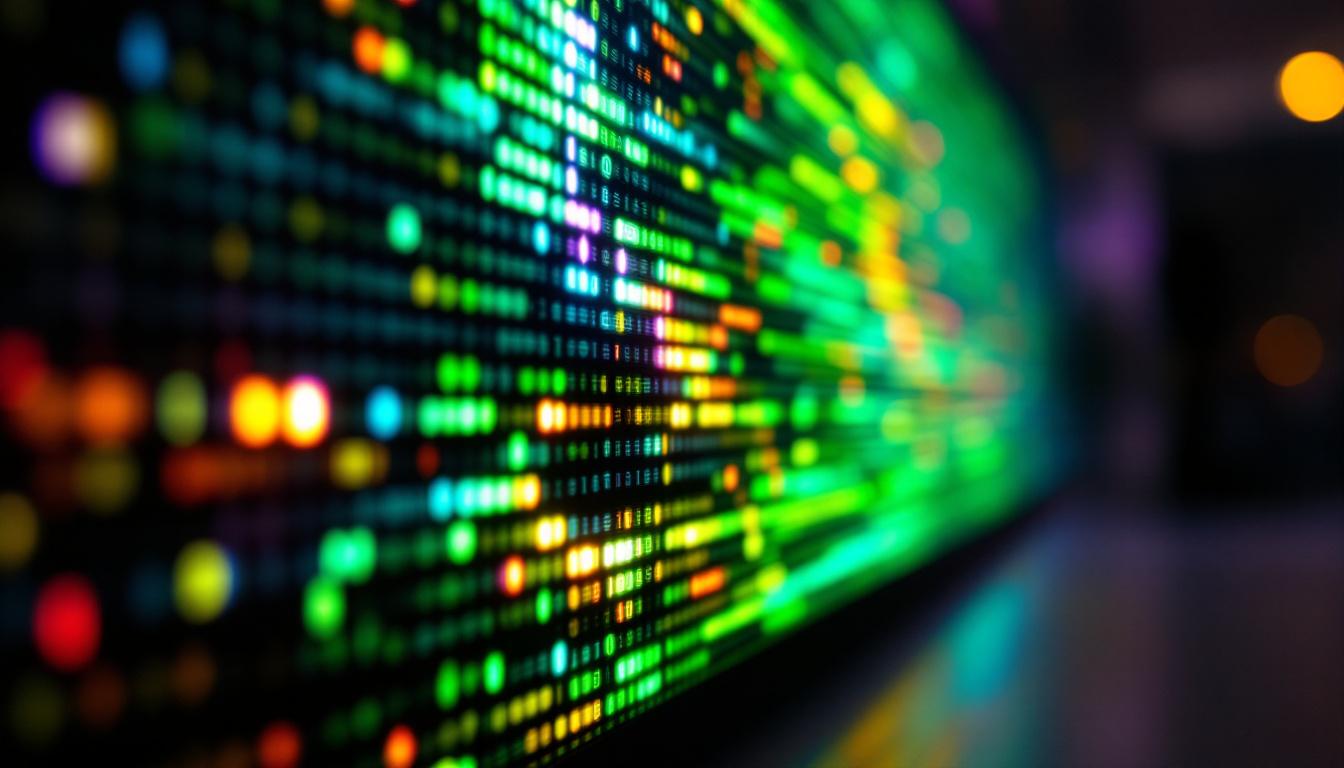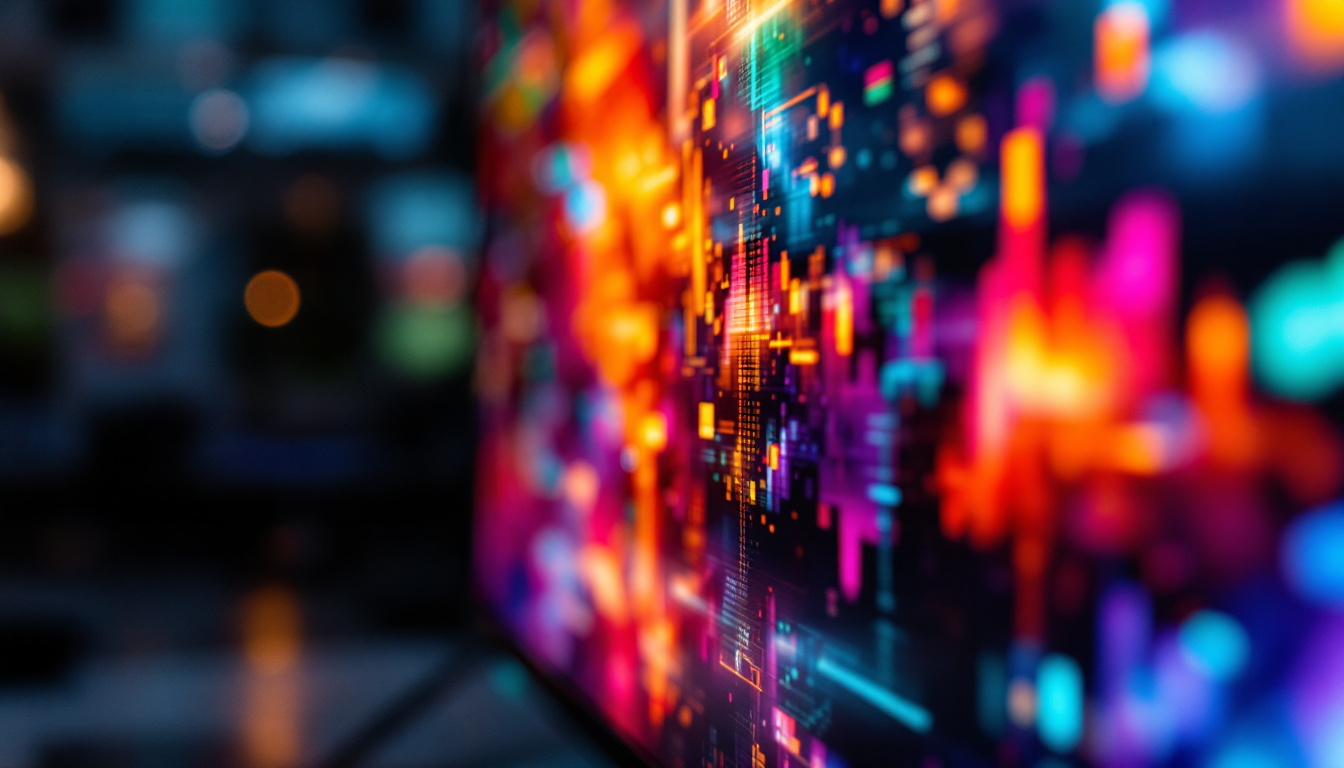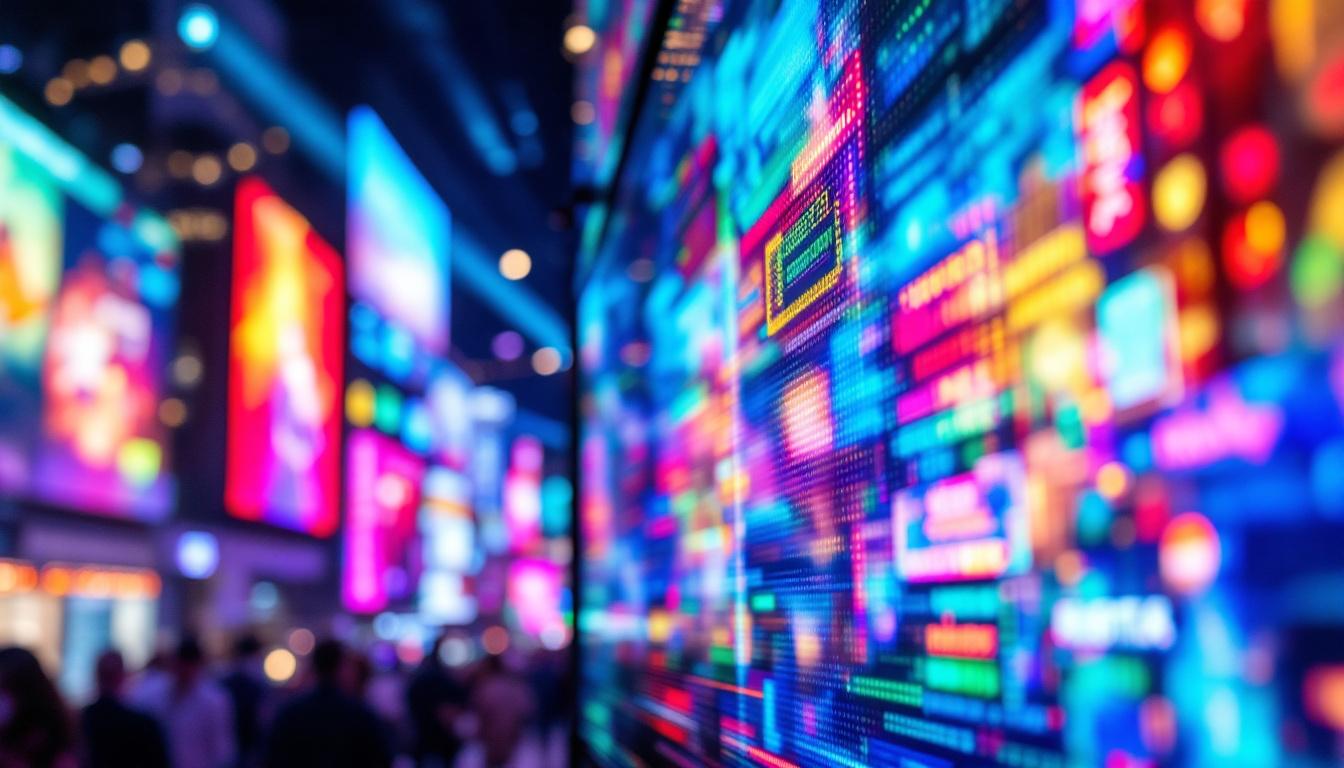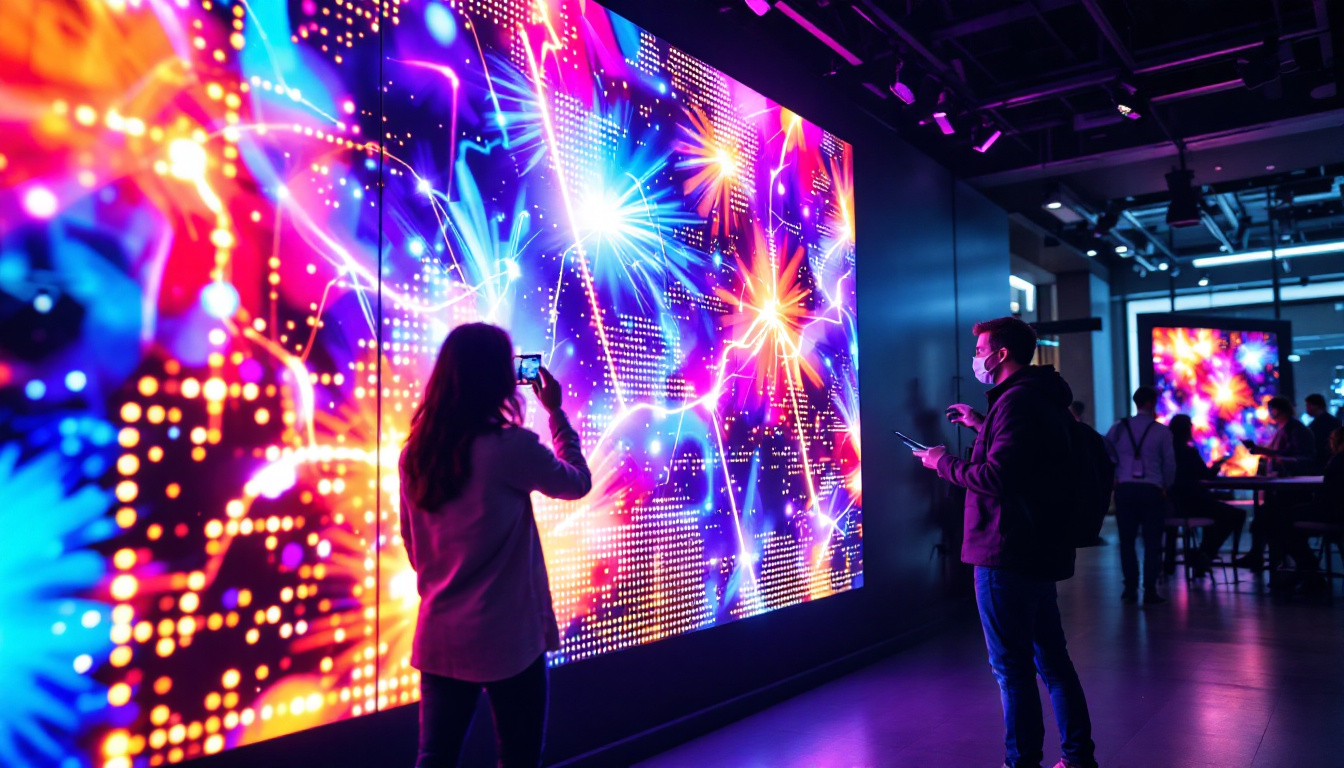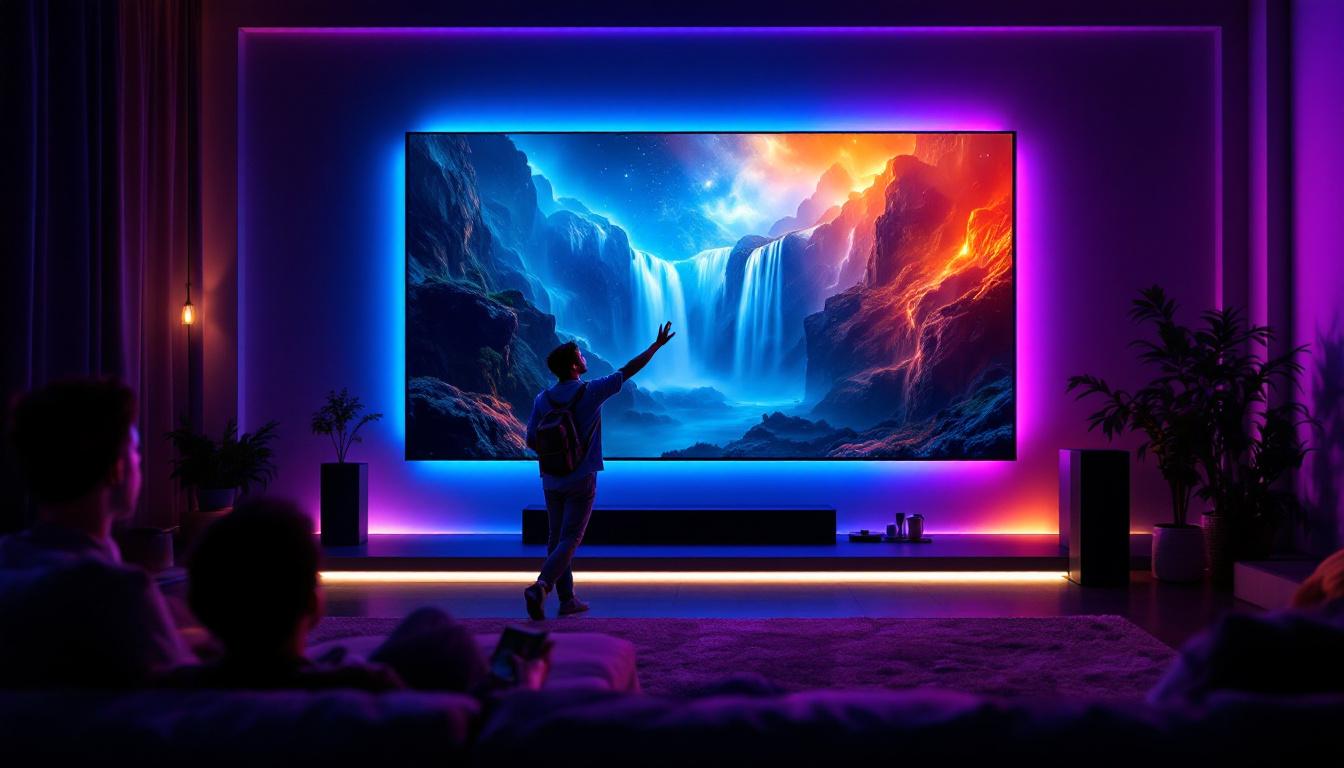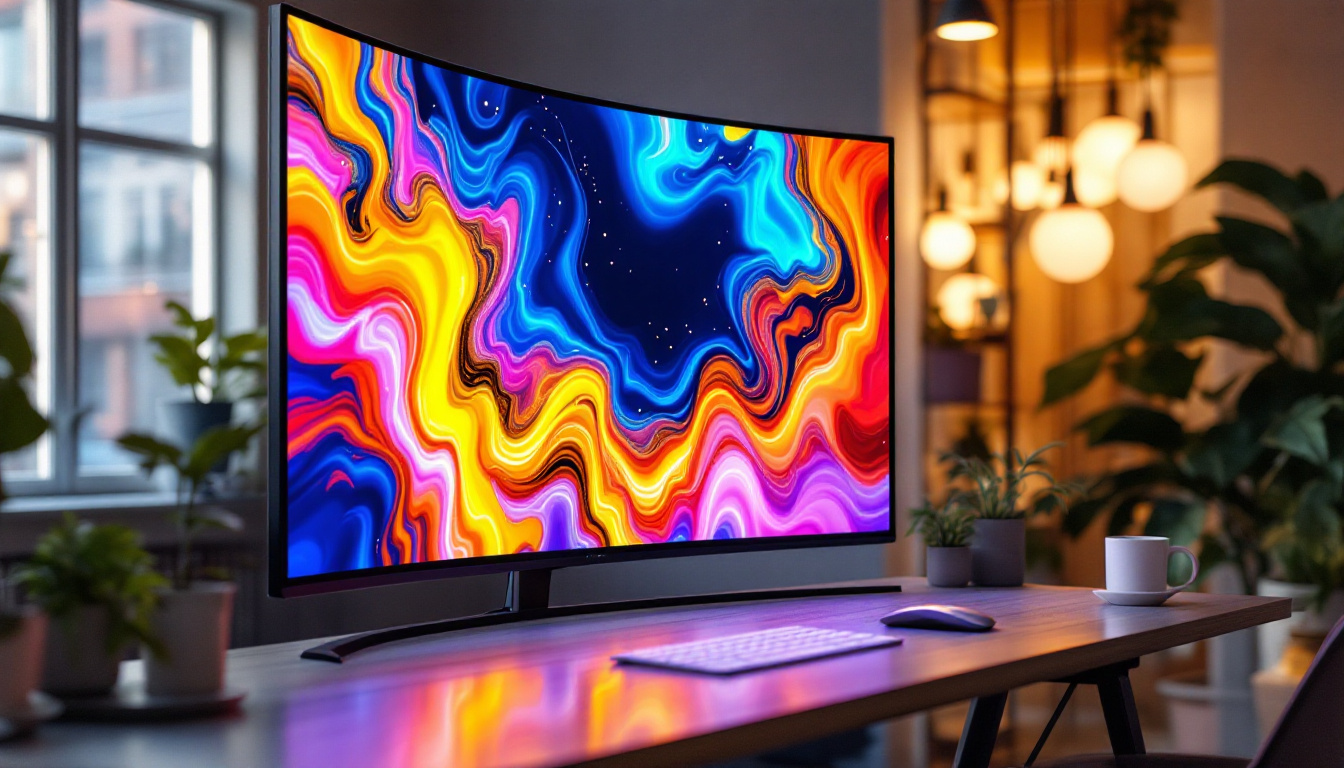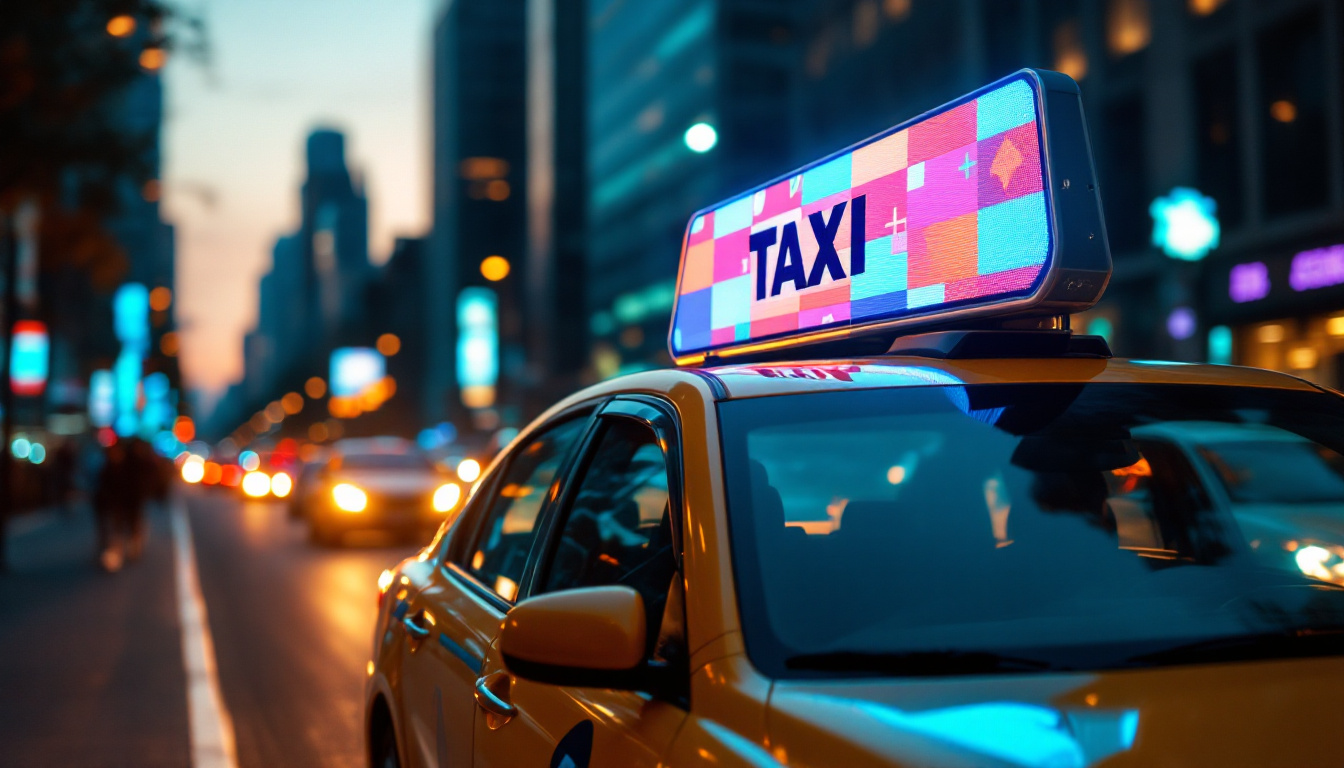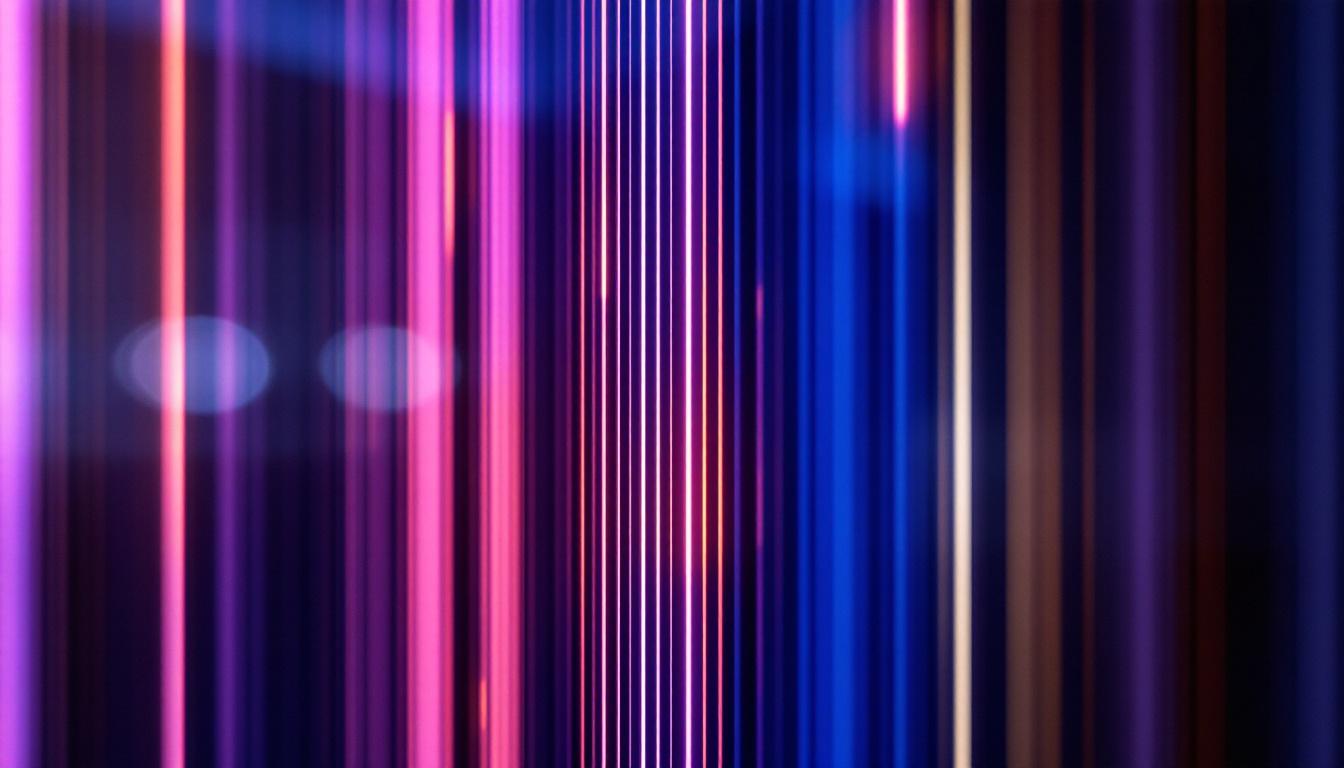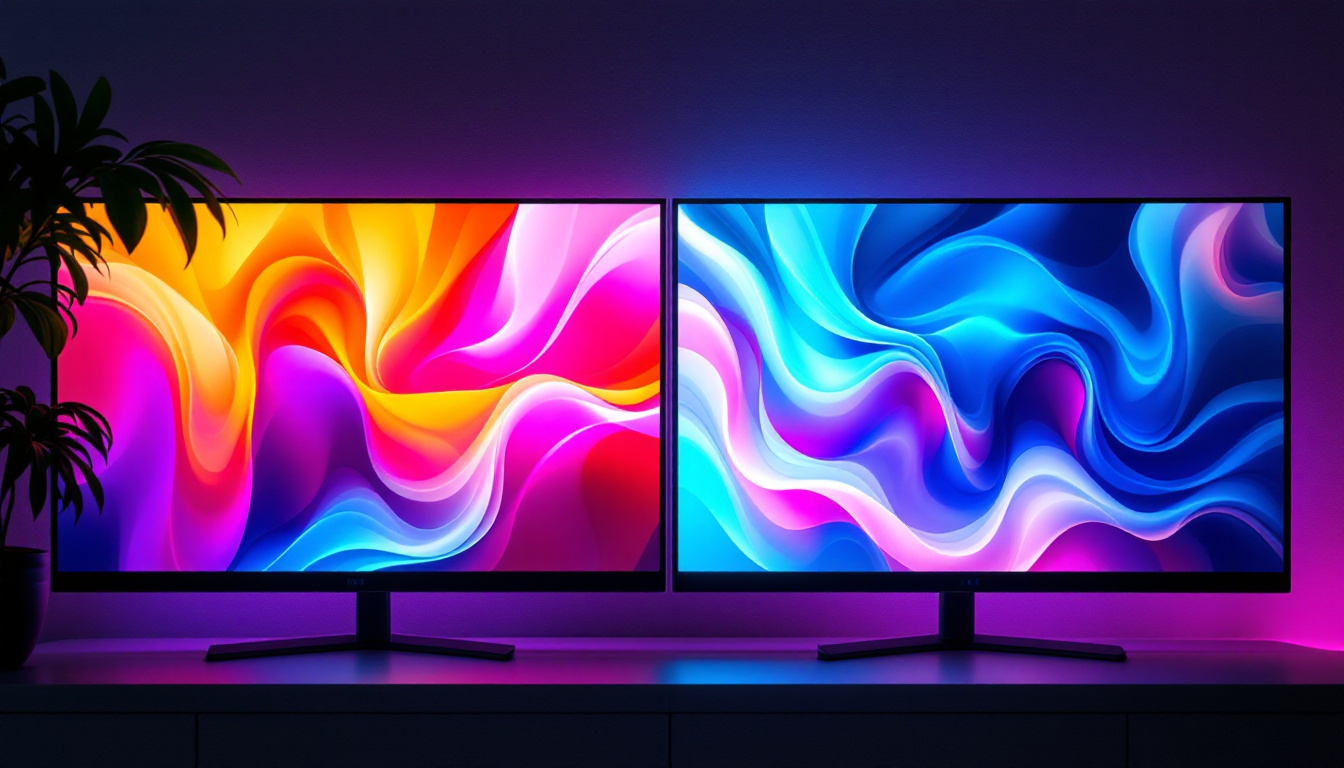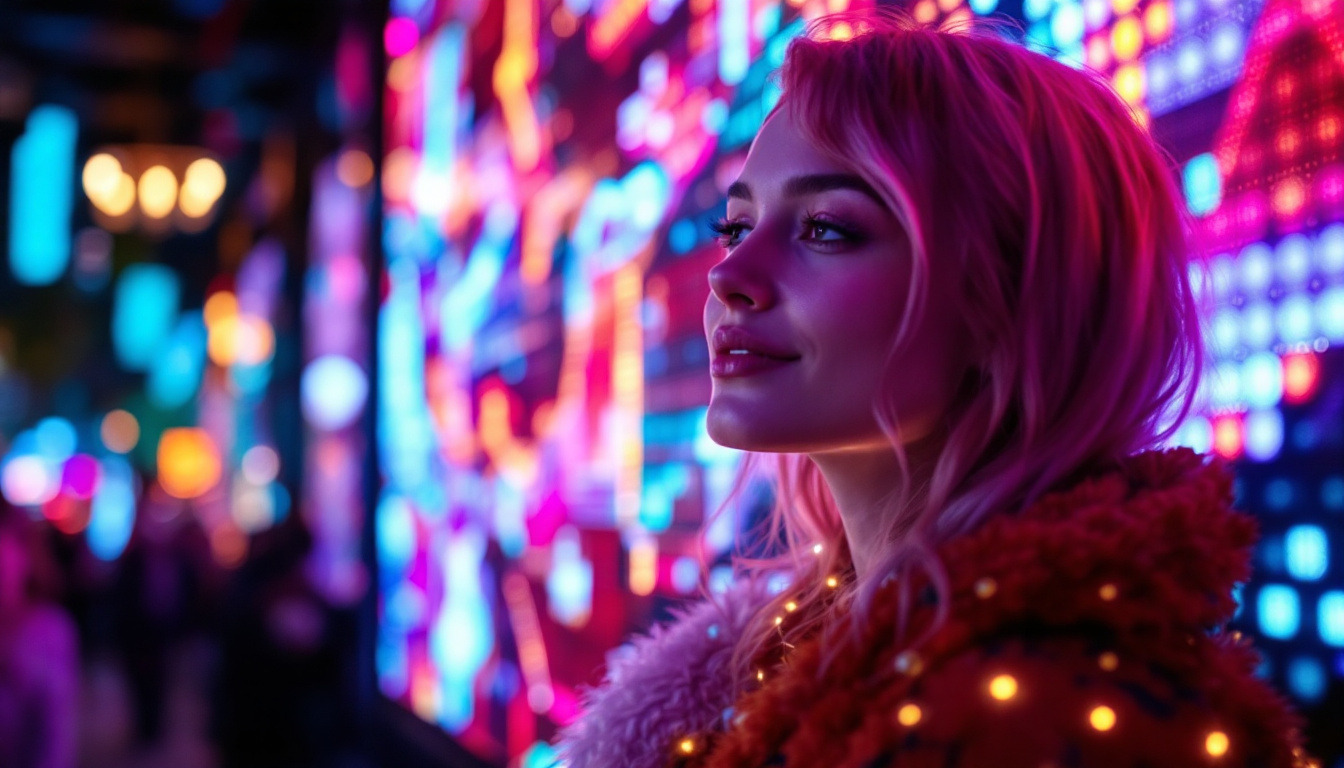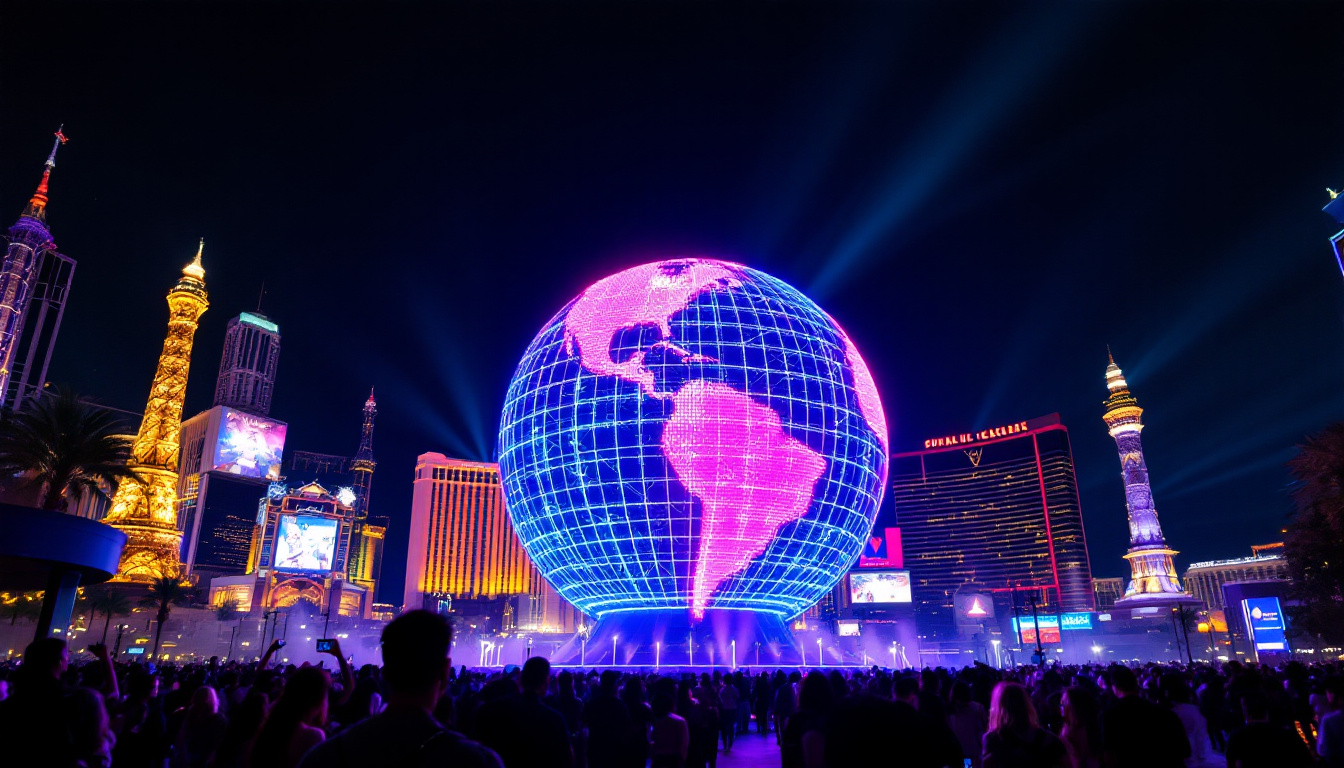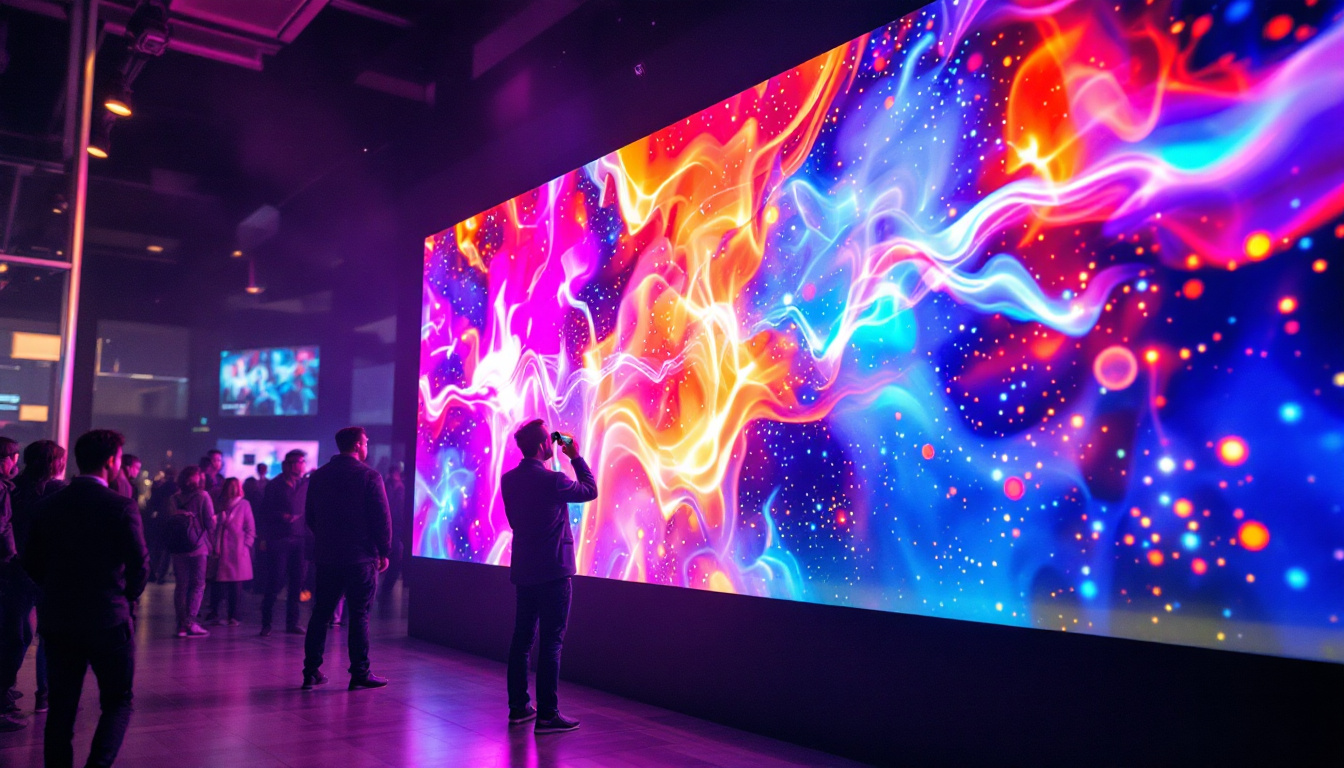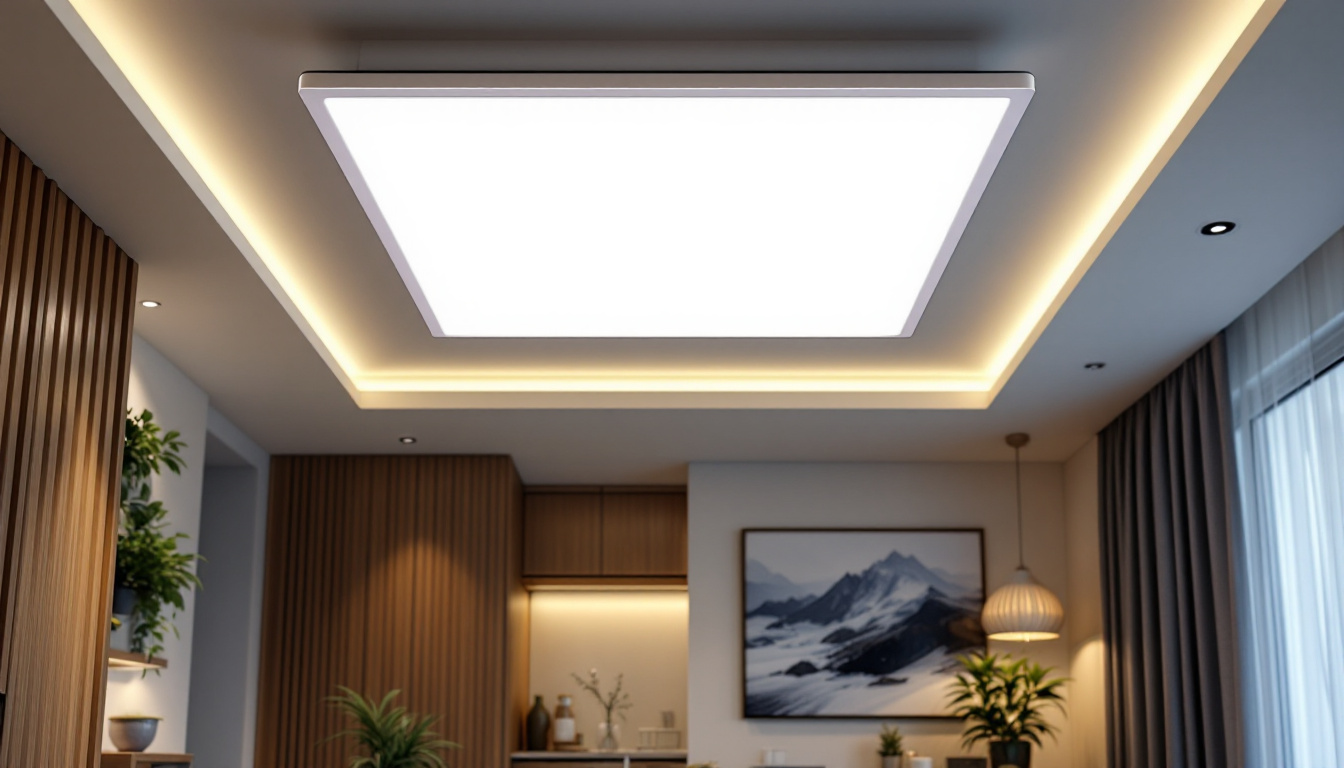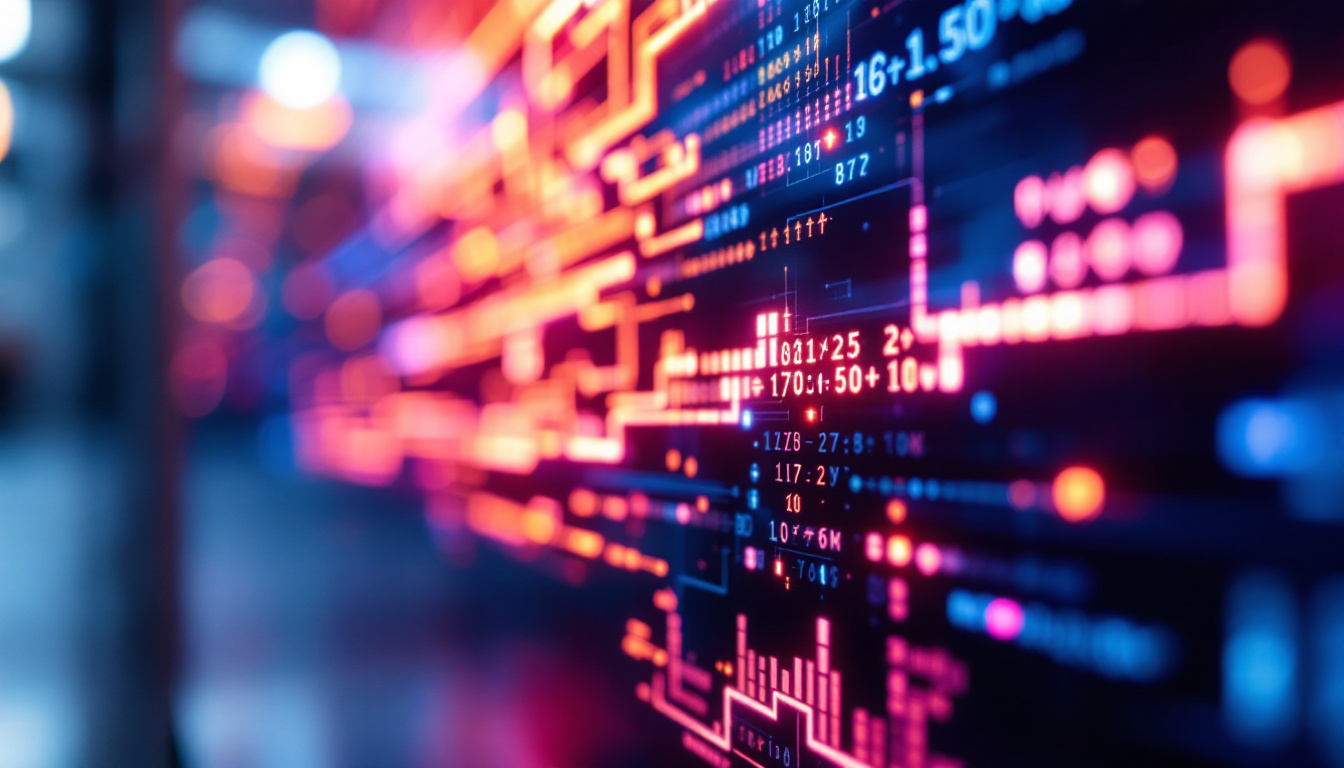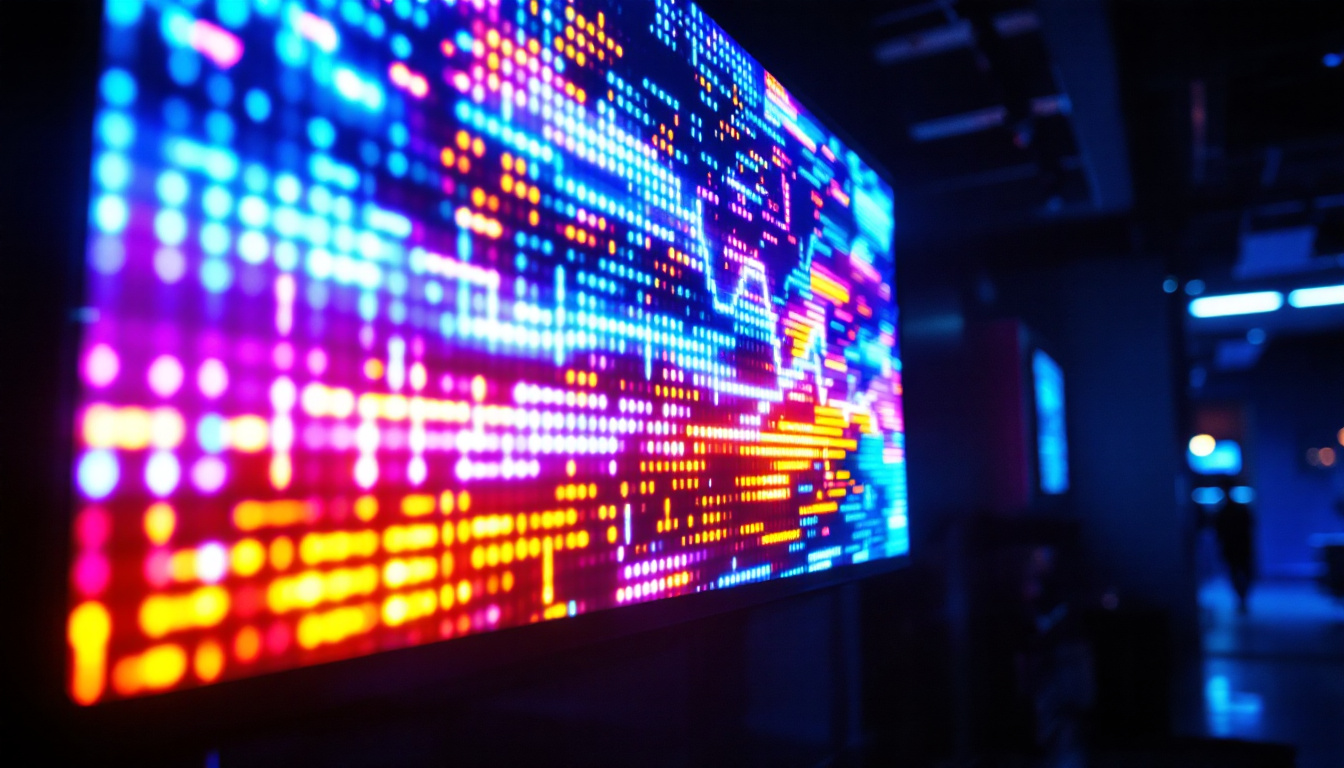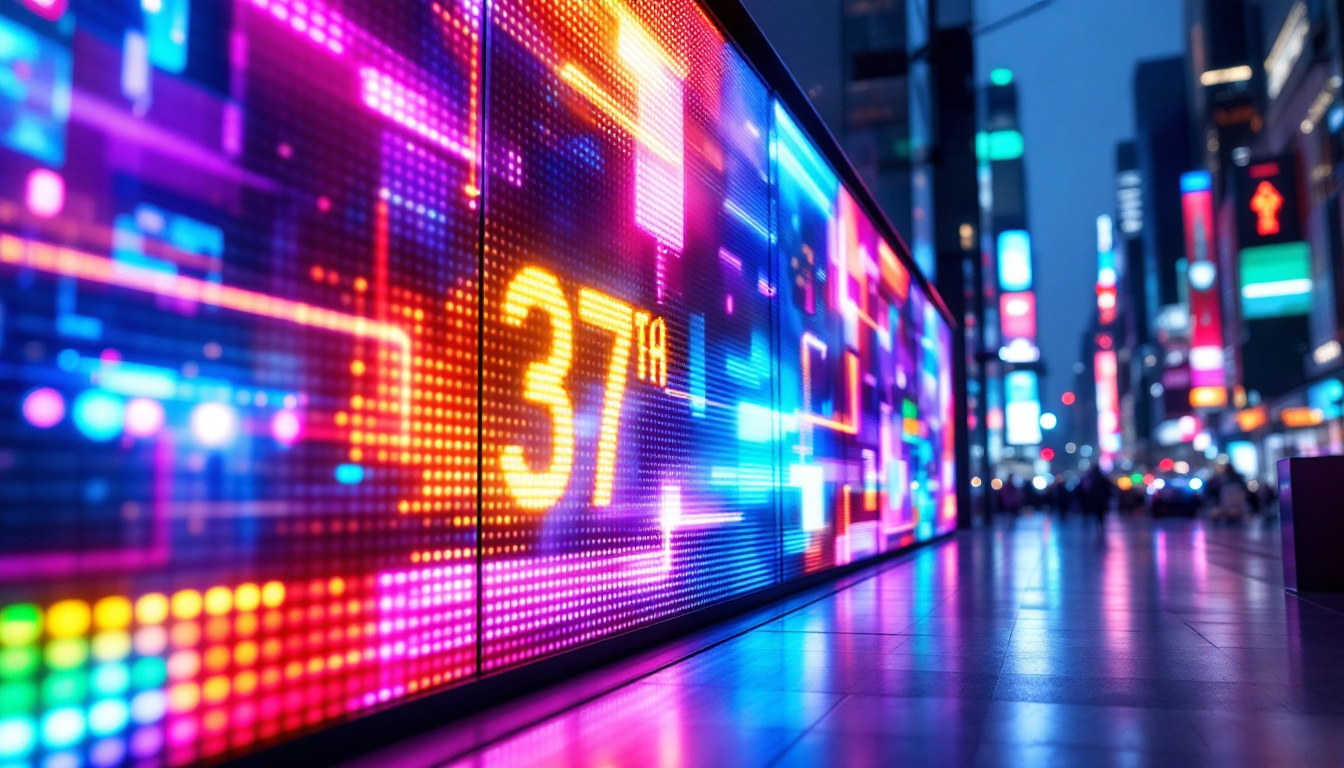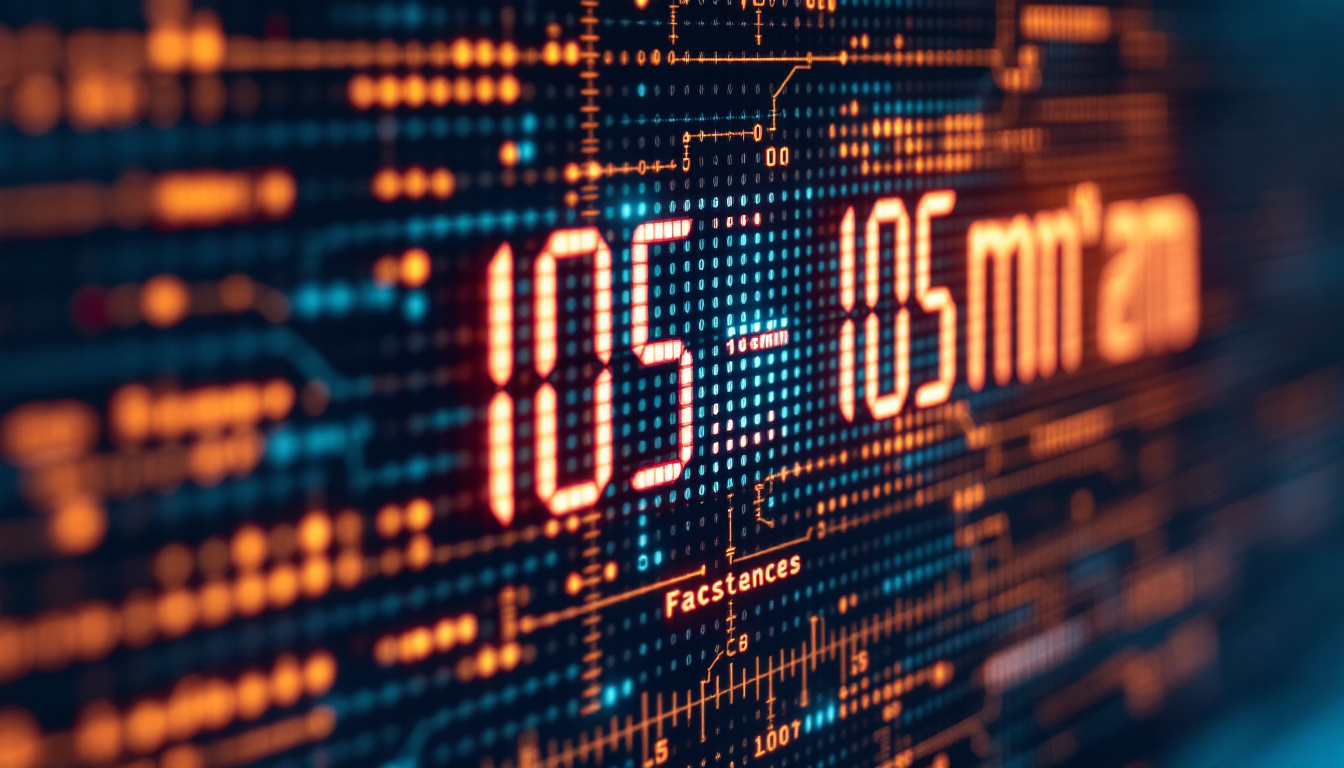In the ever-evolving world of advertising, LED displays have emerged as a powerful medium for capturing attention and conveying messages. These vibrant screens, often seen in urban landscapes, sports arenas, and retail environments, offer a dynamic way to engage audiences. This article delves into the intricacies of LED displays, exploring their technology, applications, and benefits in the advertising landscape.
Understanding LED Technology
LED, or Light Emitting Diode, technology is at the heart of modern display systems. Unlike traditional displays that rely on backlighting, LED displays utilize individual diodes to produce light, resulting in brighter and more energy-efficient screens. This shift not only enhances visual quality but also significantly reduces energy consumption, making LED technology a preferred choice for both commercial and residential applications.
How LED Displays Work
At their core, LED displays consist of thousands of tiny light-emitting diodes arranged in a grid. Each diode can emit red, green, or blue light, and by varying the intensity of these colors, a full spectrum of hues can be created. This RGB (red, green, blue) color mixing is what allows for high-definition images and videos to be displayed. The precision with which these diodes can be controlled enables not only vibrant colors but also smooth transitions and dynamic content that can capture the viewer’s attention.
The arrangement of these diodes can vary, leading to different types of LED displays. For instance, outdoor displays are often designed with larger pixel pitches to ensure visibility from a distance, while indoor displays can have a tighter pixel pitch for detailed imagery. Additionally, advancements in technology have led to the development of microLED and miniLED displays, which offer even greater control over light output and color accuracy, pushing the boundaries of what is possible in visual displays.
Types of LED Displays
LED displays can be categorized into several types based on their usage and environment. Common types include:
- Indoor LED Displays: These are designed for use in controlled environments, such as shopping malls and conference centers. They typically have a higher pixel density, providing sharper images and videos. The ability to display high-resolution content makes them ideal for presentations, advertisements, and entertainment purposes, creating immersive experiences for viewers.
- Outdoor LED Displays: Built to withstand weather conditions, these displays are often seen in billboards and sports venues. They are brighter and more robust, ensuring visibility even in direct sunlight. Moreover, many outdoor LED displays are equipped with advanced features such as automatic brightness adjustment, which optimizes visibility based on ambient light conditions, ensuring that content remains clear and engaging at all times.
- Transparent LED Displays: These innovative displays allow light to pass through, making them ideal for storefronts and exhibitions where visibility is essential. By blending digital content with the physical environment, transparent displays create a unique viewing experience that attracts customers while maintaining the aesthetic of the space.
In addition to these common types, there are also specialized LED displays designed for specific applications, such as stage backdrops for concerts or high-resolution screens for control rooms. These displays often incorporate advanced technologies like curved designs or flexible panels, allowing for creative installations that enhance the overall visual impact of events and environments.
Applications of LED Displays
LED displays have found applications across various sectors, revolutionizing how businesses communicate with their audiences. From advertising to information dissemination, their versatility is unmatched.
Advertising and Marketing
One of the primary uses of LED displays is in advertising. Their vibrant colors and dynamic content make them an attractive option for brands looking to capture consumer attention. Digital billboards can change messages in real-time, allowing advertisers to tailor their content based on time of day or audience demographics.
Moreover, LED displays can be integrated with social media feeds and live data, creating interactive experiences that engage viewers. This level of interactivity not only enhances brand visibility but also fosters a connection between the consumer and the brand. For instance, brands can run contests or polls displayed on the LED screens, encouraging passersby to participate and share their experiences online, which can significantly amplify the reach of marketing campaigns.
Information and Wayfinding
In addition to advertising, LED displays serve as effective tools for information dissemination. Airports, train stations, and shopping malls utilize these displays to provide real-time updates on schedules, directions, and promotions. This functionality improves customer experience by ensuring that information is readily available and easily digestible. Furthermore, the adaptability of LED technology allows for multilingual displays, catering to diverse audiences and enhancing accessibility for international travelers.
In urban environments, LED wayfinding systems are becoming increasingly common, guiding pedestrians through complex areas with ease. These displays can also be programmed to highlight local attractions, dining options, or events happening nearby, enriching the visitor experience and promoting local businesses. The integration of GPS technology with LED displays can further enhance navigation, providing users with turn-by-turn directions and estimated travel times.
Entertainment and Events
LED displays play a crucial role in the entertainment industry, particularly in concerts and sporting events. Large-scale LED screens are used to broadcast live performances, enhancing the experience for attendees. They can also display instant replays, statistics, and other engaging content, keeping the audience informed and entertained. The ability to customize content in real-time allows event organizers to create a more immersive atmosphere, often syncing visuals with music or live commentary to heighten the emotional impact of the event.
Moreover, LED displays are not limited to just large venues; they are increasingly being used in smaller settings, such as local theaters and community events, to create a more professional and engaging presentation. The portability of smaller LED panels allows for versatile setups, making it easier to adapt to different venues and audience sizes. As technology continues to advance, we can expect to see even more innovative uses of LED displays in the entertainment sector, including augmented reality experiences that blend digital content with live performances, further blurring the lines between reality and virtual engagement.
Benefits of LED Displays
The advantages of LED displays extend beyond their visual appeal. They offer a range of benefits that make them an attractive choice for businesses and organizations.
Energy Efficiency
One of the standout features of LED technology is its energy efficiency. Compared to traditional lighting solutions, LED displays consume significantly less power, leading to reduced operational costs. This efficiency is particularly beneficial for large installations that operate continuously, such as billboards and digital signage.
Longevity and Durability
LED displays are known for their longevity. With a lifespan of up to 100,000 hours, they outlast many other display technologies. Additionally, they are more resistant to shocks and vibrations, making them suitable for outdoor environments where they are exposed to the elements.
High Brightness and Visibility
LED displays are designed to be exceptionally bright, ensuring that content remains visible even in direct sunlight. This characteristic is crucial for outdoor advertising, where visibility can significantly impact the effectiveness of a campaign. The ability to adjust brightness levels also allows for optimal viewing in various lighting conditions.
Challenges and Considerations
While LED displays offer numerous benefits, there are challenges and considerations that potential users should keep in mind. Understanding these factors can help in making informed decisions regarding installation and usage.
Initial Investment
The initial cost of purchasing and installing LED displays can be significant. Although prices have decreased over the years, high-quality LED screens still require a substantial investment. Businesses should weigh this upfront cost against the long-term savings and benefits that LED displays provide.
Content Management
Effective content management is essential for maximizing the impact of LED displays. Businesses need to invest in content creation and management systems to ensure that their displays are updated regularly with engaging and relevant material. This ongoing effort requires resources and expertise, which can be a barrier for some organizations.
Regulatory Compliance
Depending on the location, there may be regulations governing the use of LED displays, particularly for outdoor advertising. Businesses should familiarize themselves with local laws and guidelines to ensure compliance and avoid potential fines or legal issues.
The Future of LED Displays
The future of LED displays looks promising, with advancements in technology paving the way for even more innovative applications. As technology continues to evolve, several trends are emerging that could shape the future of LED displays.
Integration with Smart Technology
As smart technology becomes increasingly prevalent, LED displays are likely to integrate more seamlessly with other digital platforms. This integration could lead to enhanced interactivity, allowing users to engage with content in real-time through their smartphones or other devices.
Improved Resolution and Pixel Density
Ongoing advancements in LED technology are resulting in higher resolutions and tighter pixel densities. This improvement will enable even more detailed and vibrant displays, enhancing the overall viewing experience. As a result, LED displays will become more suitable for a wider range of applications, including art installations and high-end retail environments.
Sustainability Initiatives
With growing concerns about environmental impact, the LED industry is focusing on sustainability. Future developments may include more eco-friendly materials and manufacturing processes, as well as recycling programs for old displays. These initiatives will help reduce the carbon footprint associated with LED technology.
Conclusion
LED displays have transformed the advertising landscape, offering dynamic and engaging ways for businesses to communicate with their audiences. Their energy efficiency, durability, and versatility make them an attractive choice for a wide range of applications. However, potential users should consider the initial investment, content management needs, and regulatory compliance when implementing these displays.
As technology continues to advance, the future of LED displays promises even more exciting possibilities. From enhanced interactivity to improved resolution, the potential for innovation is vast. Embracing LED technology can provide businesses with a competitive edge in an increasingly digital world, making it a worthwhile investment for the future.
Discover LumenMatrix’s Innovative LED Solutions
Ready to elevate your advertising strategy with the latest in LED technology? Look no further than LumenMatrix, a pioneer in crafting LED display modules that not only boost brand visibility but also provide immersive visual experiences. Whether you need an Indoor LED Wall Display for your retail space, an Outdoor LED Wall Display for impactful billboards, or any of our specialized solutions like Vehicle LED Displays, LED Sports Displays, or Custom LED Displays, LumenMatrix has the expertise to bring your vision to life. Embrace the future of visual communication and check out LumenMatrix LED Display Solutions today to create a lasting impression on your audience.

